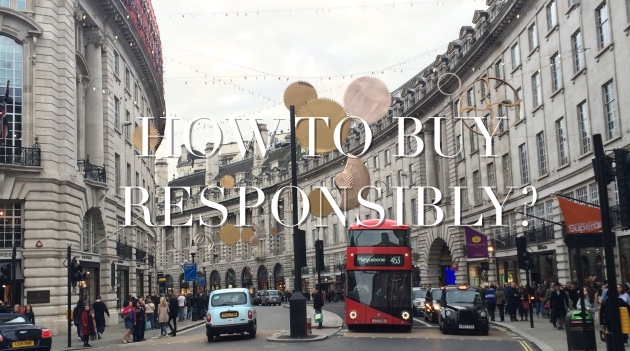
I'm not sure if it has to do with getting older and becoming more aware of the world around me, or these times we're living in but for a while now I really don't enjoy shopping for clothes as much as I used to. When I was younger I couldn't wait to go to central Amsterdam with my friends and 'shop till we dropped'. Preferably stopping by Starbucks first to get one of these awfully sugary Caramel macchiato's. But a lot has changed since then.
I think one defining moment for me was watching the documentary The True Cost, which is about the clothes we wear, the people who make them, and the impact the clothing industry is having on our world. The documentary wasn't a complete revelation for me, because I knew before watching it that the working conditions in the clothing industry are really bad for many people, but I never completely grasped the massive impact this industry has on the environment.
Not long after that I found myself standing in a huge Zara in Rome, some items in hand to try on, looking at the masses of shoppers going through the latest collection, and I thought: "What on earth am I doing here??". It just didn't feel right, all these people buying clothes they probably didn't need, possibly made by people under unacceptable working conditions and made of materials that are not sustainable in the quantities they are made now.
We are currently living in an age of consumerism where people are just buying things for the sake of buying. It shouldn't be like that. The whole idea of fast fashion, where items should be available as soon as they're shown on the catwalk so you can always buy clothes that are 'on trend', is a bit ridiculous if you think about it. I'm not saying we should only buy new clothes when we really need them, but buying a new t-shirt shouldn't be as normal as doing groceries either. People should be aware of the work and resources that go into making a garment and understand what impact the clothing industry has on the environment.
I think one step in the right direction is buying less, but whenever I do buy something new, it should be a responsible and sustainable buy. So the question is: how do I do that? If you were hoping to find an answer to this question in this post, I must disappoint you, I'll give some suggestions, but what I really want, is to hear how you go about buying responsibly.
I think a good option is to buy second hand clothes. It's one of the easiest ways to improve your fashion sustainability, and it can be quite cheap as well. In some second hand shops, they even customise items to make them more fashionable. Some of my favourite places in London are
Blitz and
Ragyard, close to Brick Lane. But admittedly thrift shopping can be quite difficult, especially if you need something specific.
When buying 'new' new clothes, the most difficult thing I find is to determine what brands are 'good' and which are not. How do I know if a brand is sustainable and treats its employees right? Should I focus on where a garment was made, what it's made of or something completely different? When buying new clothes I usually check what they're made of, because I prefer to wear clothes made of natural fibres rather than synthetic fibres. But to be honest, I don't really look at whether a cotton shirt has been made in a sustainable way or not, because that information is usually not provided on the garment itself.
Not too long ago I came across
Project Just, which aims to inform consumers about fashion brands. It's a website that provides a catalogue of research on fashion brands’ manufacturing and their environmental and social impacts. Reading through some of the information, I already found out quite a lot about some of the brands I like. I'll definitely try to keep the things I read in mind the next time I go shopping, and keep my fingers crossed they'll keep on adding brands to the catalogue so I'll be able to make good decisions when buying clothes. And in the meantime, I will continue doing research into making my clothing purchases responsible and sustainable.
I'd love to hear your thoughts on this topic and how you go about shopping responsibly, so please comment below! :)